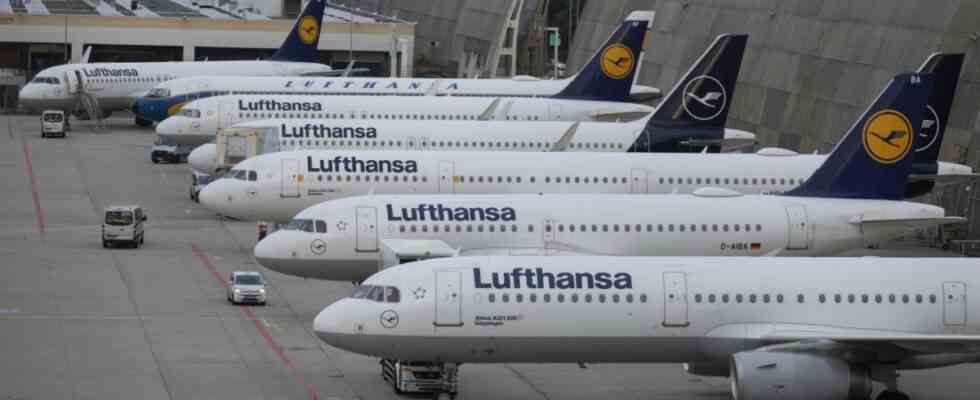In the end, the disappointment at the Lufthansa Aviation Center (LAC) wasn’t particularly great. The planners had been busy for months with the takeover of the new Italian airline ITA Airways. For a long time it looked as if the group would be awarded the contract together with the shipping company MSC. But then the outgoing Mario Draghi government began exclusive negotiations with competitors from Certares, Air France-KLM and Delta. Lufthansa was out of the race.
The fact that the group’s headquarters did not fall into a mood of crisis was partly due to the fact that the alleged new right-wing Italian government does not want privatization and the case has become politically sensitive. Since Lufthansa is well represented in Italy with its own flights anyway, it was happy to do without in the end and is now watching with interest how the fund company Certares, which heads the consortium, has to struggle with the new government. However, the question now arises as to how Lufthansa intends to achieve its stated goal of actively participating in the consolidation of the aviation sector, i.e. as an investor, and above all of growing outside of Germany.
The answer has three parts. The simplest is called Air Dolomiti. The Italian regional airline has been part of the group for a long time, connects the hubs in Frankfurt and Munich primarily with the northern Italian provinces and could now grow more strongly. In addition, there are currently two major takeover targets in Europe that interested investors will have to consider sooner or later: TAP Air Portugal and SAS Scandinavian Airlines. At first glance, both are ideal for Lufthansa, because both TAP and SAS, like the German airline, have been members of the Star Alliance for a long time and are also closely linked in bilateral agreements. At second glance, it is much more complicated.
After Iberia, TAP is the smaller of the two major airlines on the Iberian Peninsula. Its specialty is long-haul routes from its hub in Lisbon to South America and in particular to Brazil. From Lufthansa’s point of view, these are probably the most attractive part of the airline. Lufthansa has tended to lose market share on the South Atlantic over the years. In Brazil, it lost three previous partners in a short time: Varig and Avianca Brazil went bankrupt, TAM merged with the Chilean LAN to form LATAM Airlines and switched first to the Oneworld alliance (including with British Airways) and later to Skyteam (Air France KLM, Delta). Subsequently, British Airways’ parent company, International Airlines Group, also bought a stake in the Spanish South American specialist Air Europa. Since then, Lufthansa has been under pressure.
Lufthansa was already ready to buy TAP in 2019, but the pandemic intervened
The Portuguese government has now announced that TAP will be majority privatized in the first half of 2023. However, she has not yet given any details. The recent history of the airline is turbulent: for decades, TAP was state-owned and at times made heavy losses. Then a consortium led by the American-Brazilian flight entrepreneur David Neeleman got on board. After endless quarrels with the government, he wanted to sell again in 2019 and Lufthansa was seriously interested. Then the Corona pandemic halted all investments and the Neeleman stake went back into state ownership. Portugal subsidized the airline with more than 2.5 billion euros during the crisis. Let someone else take care of TAP now.
The new boss, Frenchwoman Christine Ourmières-Widener, is trying to quickly boost the numbers with a savings program, but in Frankfurt, after two years of the crisis, enthusiasm for TAP has reportedly waned noticeably. An exception would have been made for ITA, but there are simply too many internal problems to spare a lot of time and money for a seemingly marginal investment like TAP. Actually, every euro should either be put into debt reduction or into new aircraft and the on-board product that is no longer so convincing.
So there is not much to be said for forcing an entry into TAP, especially since the sale of a majority stake to a private investor in Portugal is now also politically controversial. However, there is one scenario that should give Lufthansa cause for concern: Air France-KLM will pay back the state aid by the end of the year, will then be free to invest elsewhere and will be awarded the contract by TAP. This would mean that Lufthansa would lose its most important partner in South American business, along with the Colombian company Avianca, to a direct competitor that is already the leader in the market segment thanks to its connection with LATAM Airlines.
The case of SAS is different. The Scandinavian airline has actually been in restructuring mode for decades thanks to high costs. Most recently, the new boss Anko van der Werff presented a new, rigid program. After the pilots went on a bitter strike, which was extremely expensive for SAS, SAS filed for Chapter 11 bankruptcy – van der Werff had done the same when he was Avianca boss. As part of the planned restructuring, the airline will continue to shrink. It has just canceled leasing contracts for about ten percent of the fleet.
For Lufthansa, SAS has its value in local traffic and as a supplier for long-haul passengers. Unlike TAP, the airline does not play a strategically important role in intercontinental traffic. It is unclear whether and when Denmark and Sweden – both of which still hold large shares – will sell SAS. They have just agreed to put more money into the company to complete the bankruptcy proceedings.

